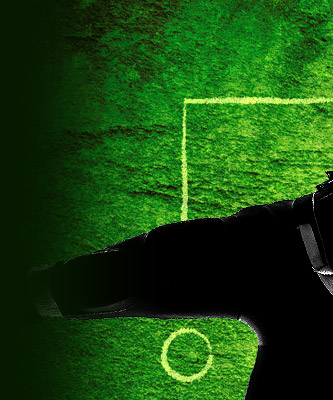No Mid-Shoe Entry Rule
Dear Mark,
I am writing you to complain about a conflict I was involved in this past weekend. My girlfriend was playing blackjack and I was just finishing up a hot session on the crap table. Still feeling lucky, I walked over to the table she was playing on, and with one circle available, I placed $500 on the layout. Immediately the dealer said I couldn't do that. Naturally I complained, so he calls over the pit boss, and she, the pit boss, informs me that according to the rules I will need to wait until the next shuffle before I am able to make a wager. I've never heard of such a thing. What's the deal?
- Jerry C.
Well, Jerry, it all goes back to Casino Panic, aka card-counting. Even though you shorted me on some table information and dialog, I deduce that you were probably playing on a shoe game, and that the unidentified casino you were gambling in had a NO Mid-Shoe Entry rule. (Had you named the joint, I could have and would have looked into their playing conditions) What you probably didn't notice, Jerry, was the sign posted on their blackjack tables that states NO Mid-Shoe Entry.
That means that once a dealer shuffles the cards and then starts to deal, a new player who comes up to the table will not be able to make a bet until the shoe is finished. One of the main reasons for this rule is to discourage "table hoppers." Table hoppers or "Wongers" (named after professional blackjack player Stanford Wong) count down the shoe as bystanders, then when the shoe turns favorable for the player, enter the game with big bets.
A NO Mid-Shoe Entry policy is just one of many measures some casinos use to ward off card-counters.

Dear Mark,
Even though I'm a rank beginner playing poker, I almost made the final table of a Texas Hold'em tournament, and had I got there, I would have finished in the money. Interestingly, with two tables remaining they had this rule whereby one table had to wait for the other table to finish their hand before starting theirs. Of course, I got beat going "all in" holding trips with 14 players left, which is whole other story, so I never made the final table. But what were they trying to accomplish with this rule?
- David C.
Poker tournaments involve multiple tables, and as players are eliminated, tables are combined, aiming at the eventual final table.
When enough players remain to form one full table, that is the final table. The situation that occurs near the end of a tournament in which only the last two tables remain is that a few players must go bust before the tables are combined to make that final table. Because some players think they can guarantee a place in the money by slow playing, hoping somebody taps out at the other table, the tournament director can stipulate that whichever table finishes a hand first must wait for the other table to finish before starting the next deal.
Here's an example, David, of how getting to that final table can be very, very rewarding. When the original field of 5,619 players that began the 2005 World Series of Poker was narrowed to nine, those top nine places paid as follows: 1st: $7.5 million; 2nd: $4.25 million; 3rd: $2.5 million; 4th: $2 million; 5th: $1.75 million; 6th: $1.5 million; 7th: $1.3 million; 8th: $1.15 million; 9th: $1 million.
If they could, most players in a position for a shot at a million dollars minimum, would slowwww play, every time. Yours Truly included.
Random Betting Articles
- Casino Comps
- Dealing Cards in Blackjack
- Full Coin in Slots
- Jacks or Better Betting Tip
- Lucky Ladies Side Bet
- Parlay Bet Odds
- Royal Match Side Bet
- Baccarat Betting Tips
- Baccarat Commission
- Poker Betting Rules
Popular Betting Articles
- Taking and laying odds
- Five Level Betting System
- Over / Under 13 Bet
- No Mid-Shoe Entry Rule
- Blackjack Betting Conditions
- Fraudulent Betting Systems
- Texas Holdem Basics
- Craps Betting Odds
- Texas Holdem Dead Card
- Craps Bets



